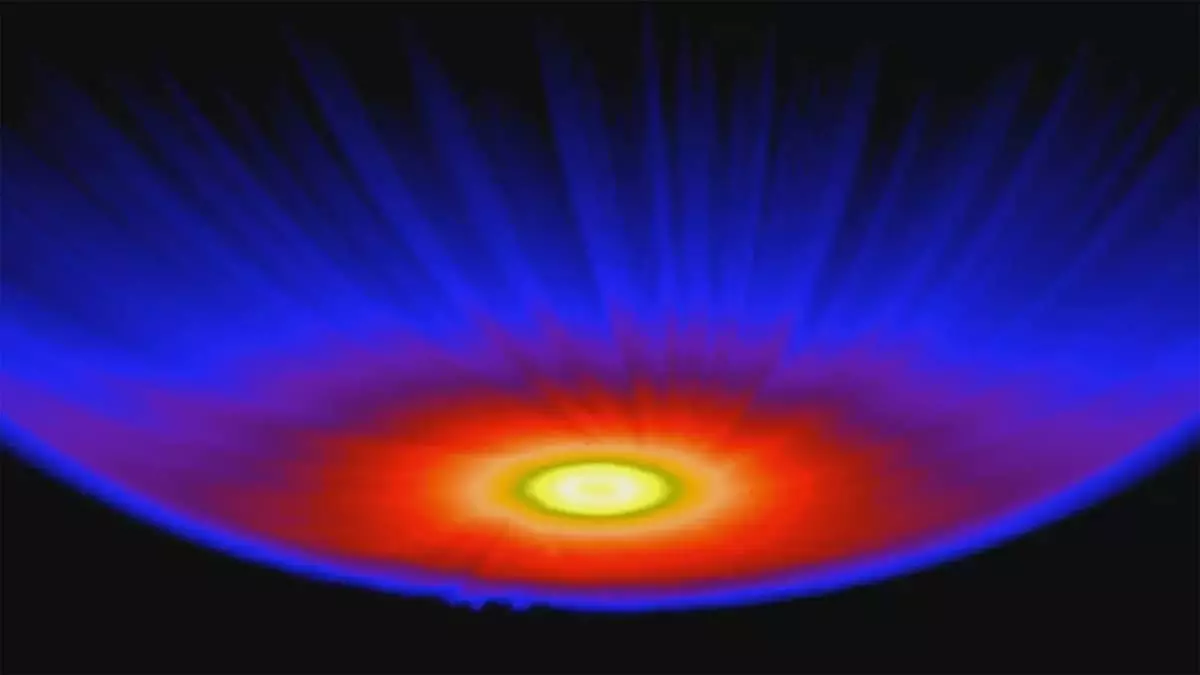The exploration of the cosmos has provided humanity with a myriad of revelations about the universe’s fundamental workings. Recently, astronomers made a groundbreaking discovery by identifying an astrosphere surrounding a star similar to our Sun. This occurrence, highlighted during the 25 Years of Science with Chandra symposium, is pivotal in enhancing our comprehension of stellar dynamics and their evolutionary trajectories. An astrosphere, essentially a bubble formed from ionized gas generated by a star’s stellar wind, functions like a shield, protecting planetary systems from harmful cosmic radiation. This newfound knowledge of astrospheres contributes significantly to our understanding of how solar systems evolve and the environmental conditions that foster planetary habitability.
The Importance of the Discovery
The star that has garnered attention in this remarkable study is HD 61005, often referred to as “The Moth” due to its striking, wing-like dust disk. Covering a youthful 100 million years in age and boasting dimensions akin to our Sun, HD 61005 presents an ideal candidate for investigating similar stellar phenomena. Historically, the detection of stratospheric entities surrounding stars that resemble the Sun has proven elusive. Researcher Carey Lisse of Johns Hopkins Applied Physics Laboratory emphasized how the rarity of such discoveries underscores their significance. For over two decades, scientists had struggled to observe astrospheres around average stars, making this detection a formidable leap in astrophysical research.
Astrospheres emerge as a direct consequence of stellar winds, the continuous flow of charged particles ejected by stars. In particular, the heliosphere of our Sun, which extends far beyond the confines of Pluto, exemplifies this phenomenon. However, the astrosphere surrounding HD 61005 presented some unexpected features. Despite expectations of irregular shapes influenced by external cosmic pressures, the data revealed a surprisingly spherical form, suggesting that the considerable force of the star’s stellar wind may overpower surrounding interstellar conditions. This finding challenges prior assumptions and raises intriguing questions about the dynamics of stellar winds and their interactions with the interstellar medium.
The revelations from the study of HD 61005 may provide essential insights into early solar behavior, especially regarding the protective capabilities that stars like the Sun offer to orbiting planets. The information gleaned from astrospheres can offer clues about habitability across different solar systems, potentially informing the search for life beyond Earth. As astronomers continue to analyze this and similar stars, our understanding of planetary environments will expand, opening new avenues for exploring the cosmos.
The detection of an astrosphere around HD 61005 marks a milestone in our comprehension of astrological phenomena. By examining these structures, researchers are poised to unlock secrets about the universe’s evolution and the factors that contribute to life in other worlds. The ongoing exploration of stars like HD 61005 is not merely an academic exercise; it has profound implications for our understanding of life and existence beyond our planetary confines.


Leave a Reply